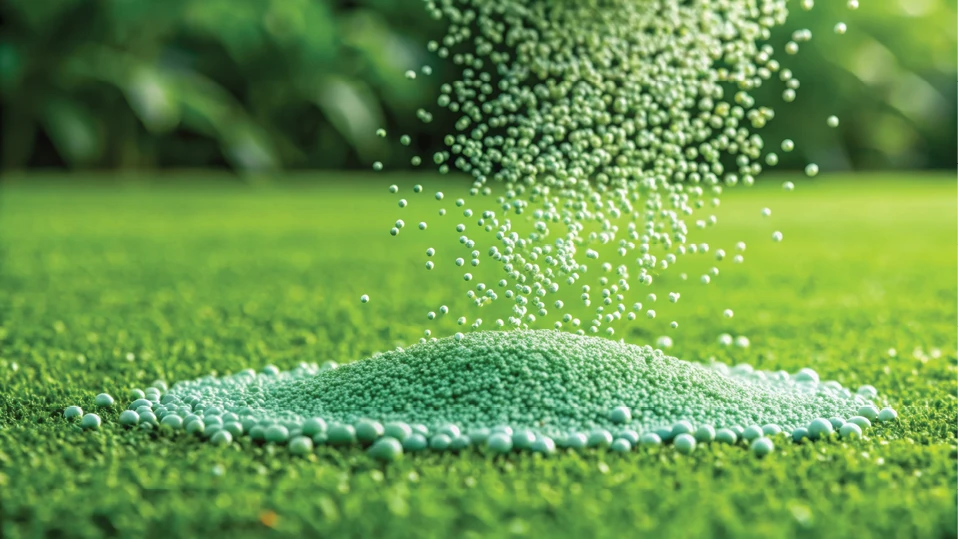Using ground-cover plantings in landscapes is becoming increasing popular, and early spring is a good time to plant them.
Areas planted with ground covers establish an effect in the landscape that is impossible to create with grass – and they generally require far less maintenance. Ground covers provide variations in height, texture and color that enrich their surroundings.
Planting ground covers now will provide them with a chance to settle in and become somewhat established before hot weather arrives.
The term ground cover is applied to low-growing plants, other than turf grass, used to cover areas of the landscape. Perennial, evergreen plants that have a sprawling or spreading habit most often are used. The plants used for ground covers generally are less than 12 high, but taller plants also can be used in certain landscapes.
In addition to their beauty, ground covers also have lots of practical uses. Since most people are reluctant to walk on through ground covers, the plants provide barriers to foot traffic and actually can guide traffic movement through a site. Because they don’t have to be mowed, ground covers reduce landscape maintenance. They also are useful where mowing would be difficult, such as on steep slopes, under low-branched trees and shrubs, where the roots of large trees protrude and in confined areas. They also are the best solution to areas under trees that have become too shady for grass to grow.
| GROUNDCOVERS FOR WARM AND COOL ZONES | ||||
|
You must carefully consider the characteristics you would like the ground cover to have (height, texture, color and so forth) when making your selection. You also need to consider the growing conditions where it will be planted (especially whether it is sunny or shady).
In addition, look at the size of the area to be planted. Only the most reliable, fast-spreading and reasonably priced ground covers should be considered for large areas. Monkey grass (Ophiopogon japonicus), creeping lily turf (Liriope spicata) and Japanese ardisia (Ardisia japonica) are good choices for shade to part-shade. Asiatic jasmine (Trachelospermum asiaticum) and liriope (Liriope muscari) are excellent for part-shade to sun.
Proper preparation of the planting area will help ensure good establishment and faster growth.
First, remove all existing unwanted vegetation, such as lawn grass or weeds from the area. This could be done physically, or you can use a herbicide such as glyphosate (various brands). Just be sure to do a thorough job.
Next, till the soil to loosen it. If you are working under a tree, use a turning fork to minimize damage to the tree’s roots, and avoid severing roots larger than an inch in diameter whenever possible.
After the soil is broken up, spread 2 inches of organic matter (compost, peat moss or rotted manure) over the surface and work it in. If necessary, 2-3 inches of additional blended soil mix (generally called topsoil or garden soil) may be added at this point.
Finally, sprinkle a general-purpose fertilizer over the area – following label directions – and thoroughly blend everything together. Now you are ready to plant.
For coverage in the shortest time, plant the ground-cover plants at the proper spacing. This varies with the type chosen, so check with the staff at the nursery or your local LSU AgCenter extension office. Although the recommended spacing will provide quicker coverage, you may find the cost higher than you expected.
Generally, budget what you can to the project, purchase as many plants of ground-cover plants as your budget will allow and evenly space them in the area to be planted. As more funds become available, purchase and plant additional ground-cover plants evenly spaced among those already planted.
After the area is planted, be sure to mulch with 1-2 inches of your favorite mulch – such as leaves (chopped is best), pine bark, leaf mold (partially decayed leaves) or pine straw. Until the ground cover fills in (generally two to three years after planting), weed control is very important. Your best defense is a good layer of mulch. Weed by hand regularly, as necessary, to maintain good weed control. In addition, most ground covers spread faster when mulched.
Once you’ve put down the mulch, water the area thoroughly to settle things in, and you’re done. To promote establishment and growth, continue to water regularly whenever rainfall does not occur for a week.
Plant ground covers now to take advantage of the cool, moist weather we have in spring. It will encourage successful establishment. Fertilize in May and again in July with the same fertilizer you used in bed preparation to promote rapid growth. Gardeners with existing areas of ground cover can fertilize in March and again in June following the above recommendations.
Ground covers can reduce maintenance, beautify problem areas and create a whole new dimension in your landscape.
Get It Growing is a weekly feature on home lawn and garden topics prepared by experts in the LSU AgCenter. For more information on such topics, contact your parish LSU AgCenter extension office or visit our Web site at www.lsuagcenter.com. A wide range of publications and a variety of other resources are available. Contact: Dan Gill at 225/578-2222 or dgill@agcenter.lsu.edu.
Latest from Lawn & Landscape
- Registration now open for Central Coast Water Summit
- Focal Pointe names Rogers to director of fleet and facilities
- Turf Masters Brands acquires Cardinal Lawns in Ohio
- LawnPro Partners acquires Gro-Masters in Savannah
- Frederico Outdoor Living adds maintenance company, COO
- Adam Frederico explains his team's first acquisition
- Why Frederico Outdoor Living found a COO outside the industry
- North Carolina's Greenscape goes national









